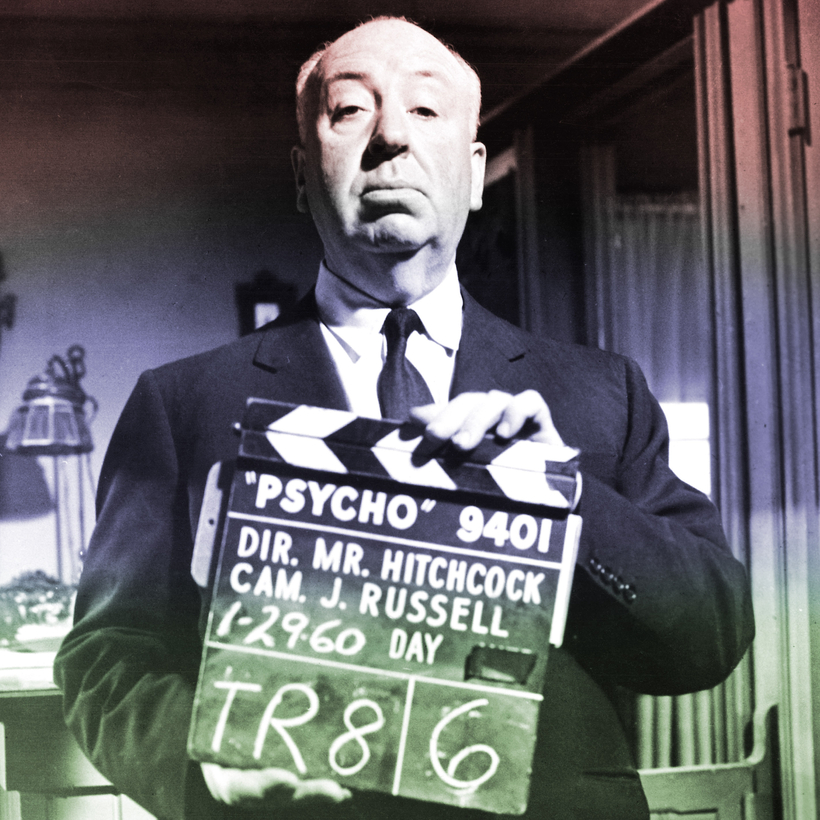Let’s face it, David Thomson is probably the very best film critic-historian currently writing. And writing: his huge (1,168 pages, small type), extraordinarily detailed and beautifully executed New Biographical Dictionary of Film: Sixth Edition all by itself would be profoundly impressive enough. But Thomson has published maybe a dozen other equally valuable—each in their way—film books.
His newest has an evocative title with a clear double meaning: A Light in the Dark, subtitled A History of Movie Directors. Indeed, this work takes us through virtually all the widely varying qualities that directors have possessed—or should possess.

He explains:
What follows in the body of this book begins as a line of notable directors, statues in the history, if you like. From Fritz Lang and Jean Renoir to Howard Hawks and Alfred Hitchcock, these men helped define the medium in their being directors. Some said they were just professionals; some preferred to be seen as artists. But other people on the edges of their lives thought they had to be crazy to be doing what they did.
Directing a movie is so ruinously stressful, it’s a marvel that some seem so calm about it while living past forty. But plenty have behaved badly, recklessly, or so close to obsession as to seem disturbed. Of all the reasons that prompted people to become film directors—especially the shy guys hiding in the dark—don’t forget its opportunity to be out of control and then be rewarded for it. Directors cannot get over the urge to be an outlaw.

This connects very clearly with something said to me by Jean Renoir—arguably the greatest film director of the Western world—while I was putting together a crew for my first picture: “You should gather around you,” he suggested, “not associates, not collaborators, but—conspirators!” Perhaps that explains why so many of us moviemakers love shooting at night: while the whole world sleeps, we are doing something perhaps a bit subversive.
The Greats
Thomson writes hip, eloquent, and extremely perceptive chapters on Renoir, Hawks, Hitchcock, D. W. Griffith, Erich von Stroheim, Fritz Lang, Orson Welles, Luis Buñuel, Nicholas Ray, Jean-Luc Godard, Quentin Tarantino, and Martin Scorsese, as well as very detailed and insightful pieces on female directors through the years, and one on a bunch of my contemporaries, which includes two long paragraphs about me! (Much better than some, not as good as others—Thomson wrongly believes, along with many, that I first started out as a film critic rather than as a New York theater actor and director.)

That I agree more or less with most of Thomson’s opinions is obviously helpful, but it’s his writing that really works brilliantly. For example, he has a way of often referring to his subjects by their first name—instead of Hawks or Mr. Hawks, it’s Howard; it’s not Hitchcock, it’s Hitch, which is what friends and associates called him. This seems to make Thomson a part of the showbiz world, which somehow tends to give what he writes even more authenticity—speaking truth from the inside of the business.
He’s also extremely good at evaluating relationships, plot points, characters. Describing Cary Grant and Rosalind Russell’s relationship in His Girl Friday, Thomson concludes:
The secret to His Girl Friday is that this couple are bound to a destiny of always breaking up so that they can regain the thrill of wooing and being wooed—so long as no one ever owns up to being in love, that embarrassing movieland swamp where intelligence and aloneness may drown.
Thomson also seems to have no compunction about bringing into his arguments some pretty personal stuff that simply could not have been printed while the subjects were alive.

In a long, complicated chapter on Hitchcock, for instance, he writes:
He met Alma Reville, a writer and continuity person who was a little ahead of him in the business. They married, and it is possible that Hitch never had sexual relations with another woman. But that can be an inducement to imagined sex with nearly every woman a man sees. Hitch was not alone in going into pictures on that impulse. Human beings were shapes in his dreams, and his concentration on a lovely actress was filled with a repressed desire that could be unkind. His rapture with women often found an urge to punish them…. He put the screws on screen women, as if that was the best option a fat man could find. So the pitch of suspense in his films is tied to his smothered lust …
One thing is unarguable: David Thomson loves the medium of the movies, which we obviously have in common. He writes that at this particular moment in life his favorite film may be Ernst Lubitsch’s deeply human 1940 comedy-romance, The Shop Around the Corner, starring James Stewart, Margaret Sullavan, and Frank Morgan as Hungarians (!) in pre–Second World War Budapest. One of my all-time favorites, too. Check it out, and this exceptional book as well.
Peter Bogdanovich is a film critic, a director, an actor, and the author of numerous books, including This Is Orson Welles and Who the Hell’s in It?

